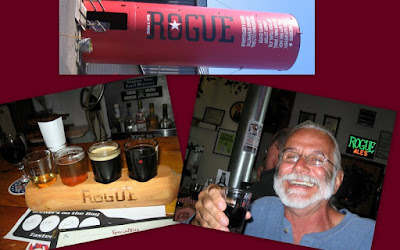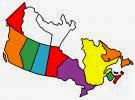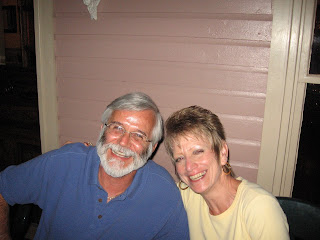 Bridges of the Oregon Coast
Bridges of the Oregon Coast Lincoln City Kite Festival
Lincoln City Kite Festival The world's smallest harbor and the world's shortest river.
The world's smallest harbor and the world's shortest river. Spouting Horns
Spouting Horns Heceta Head and Yaquina Head Lighthouse with Fresnel lens background.
Heceta Head and Yaquina Head Lighthouse with Fresnel lens background. A rogue with a Rogue.
A rogue with a Rogue. Sea Lion Cave and Rookery.
Sea Lion Cave and Rookery.We continue our drive up the Oregon coast and, as if they want you to have a real time Oregon experience, it began to rain as we passed Cape Foulweather. We are at the Chinook Bend RV Resort near Lincoln City, a campground on the bank of the Siletz River, a tidal river where the water flows "upstream" when the tide is coming in and then reverses as the tide goes out. As the title states, the Oregon coast is a cool place with temps being in the sixties with a lot of wind. This has been okay on the days when the sun is out, which has been most, but it can be bone chilling when it is overcast. It is strange to walk on the beach and see people bundled up in winter coats. I don't even have to wear my glasses because there are no cute little bikinis to see. The other half of cool is the neat and different things we continue to see and do as we travel the coastal highway. Even the bridges over the many streams and rivers flowing to the Pacific are unique. Most of them were designed by Conde B. McCollough in the 1930's and each one is different, unlike the cookie cutter bridges on today's interstate roads.
In Lincoln City they take advantage of the ideal winds and have a kite festival that is similar to the one we went to on South Padre Island in February. There were huge kites anchored in the sand and several choreographed performances with individual and team kiting. One group, iQuad, was at the Texas festival. We have included a short video of one of their routines. Lincoin City is also the home to one of several local attractions that are described by a superlative. Here, it is the "D" River which holds the Guinness Book record for being the shortest river in the world. It is only 120 feet from fresh water Devils Lake to the Pacific Ocean. Kayaking the entire length of the river is a cool thing to do.
In nearby Depoe Bay we saw the Pacific with some of the largest waves we have ever seen. The area is known for its spouting horns that channel the waves into holes that blow the spray and mist high into the air. We were there at high tide on a day with strong winds coming off the water and it was quite a show with the water coming over the high seawall. One local told us that during winter storms the spray blows across the highway. This is one of the best places to get an up close look at the waves crashing onto the rocky shore, but many other spots allow for interesting but less specular waves. It is so cool watching the waves crashing on to the rocky shoreline. Also located here is the world's smallest navigable harbor.
We visited two nearby lighthouses and both offered tours. The Yaquina Head Lighthouse is the tallest in Oregon at 93 feet and stands 217 feet above the ocean. The area around the lighthouse is administered by the Bureau of Land Management and has several hiking trails and wildlife viewpoints. There is an excellent Interpretive Center with many exhibits on the lighthouse including a full-scale replica of the lantern. The Heceta Head Lighthouse tower is 54 feet high and stands 205 feet above the water. It is the only one we have ever visited where you get to see the gears working as they rotate the lens. Both of these lights can be seen over twenty miles out to sea with their first order Fresnel lenses that have elaborate prisms designed to focus and project the oil lamp flame used when they were built in the 1800's. The lighthouse keeper's house at Heceta Head has been turned into a bed and breakfast and I'm sure the rooms would have cool views.
Newport is the biggest city in the area with many attractions including an aquarium that we did not visit. We did enjoy the historic Bayfront with its mix of working fish processing plants, shops, bars and restaurants. A big attraction for me was the Rogue Brewery which brews some of my favorite beverages. We were there as workers were finishing their shift and many of them came into the bar to enjoy some of their own handiwork. WOW what a cool job!!!
The last of the superlative attractions in the area is Sea Lion Caves which is advertised as the largest sea cave in the world. What they don't tell, but what you quickly discover when you step into the elevator to descend 200 feet, is that it is also (in our opinion) the smelliest attraction you will ever visit. The aroma of years of sea lion sh_t assault your nose the entire time you are underground. That said it was cool to be in a sea cave with the waves coming in and seeing the sea lions. Outside you can also look down on the only mainland rookery on the coast.
1Quad Video







































